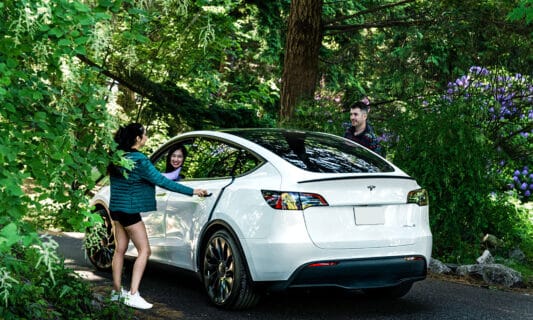July 27, 2023
The Evolution Of Electric Vehicles
The journey of electric vehicles (EVs) has been one of continuous innovation and technological advancements. From humble beginnings to the rise of industry leaders like Tesla, EVs have come a long way.

In this blog post, we will explore the origin story of electric vehicles and take a chronological journey through key inventions that have shaped their evolution, leading us to the groundbreaking success of Tesla.
1800s – The Birth of Electric Transportation
The concept of electric vehicles dates back to the early 19th century. In 1828, Hungarian inventor Ányos Jedlik developed a small-scale electric car powered by a primitive electric motor. This marked the first step towards realizing the potential of electric transportation.
1830s – The Invention of the Electric Carriage
Scottish inventor Robert Anderson is credited with building the first crude electric carriage in the 1830s. It utilized non-rechargeable primary cells, and although it had limitations, it laid the foundation for future electric vehicle advancements.
Late 1800s – The Electric Automobile Boom
The late 1800s witnessed a surge in electric automobile production. Innovators such as Thomas Davenport, Thomas Parker, and William Morrison developed various electric vehicles, showcasing their advantages over their gasoline-powered counterparts. Electric cars were quieter, easier to operate, and emitted no harmful fumes.

1900s – The Rise and Fall of Electric Vehicles
At the turn of the century, electric vehicles enjoyed significant popularity. In 1900, electric cars accounted for nearly one-third of all vehicles on U.S. roads. However, challenges like limited range, long charging times, and the discovery of vast oil reserves led to the dominance of internal combustion engine vehicles.
1990s – EV Resurgence and the GM EV1
Amid growing concerns about environmental impact and rising fuel prices, interest in electric vehicles resurged in the 1990s. General Motors introduced the GM EV1, a groundbreaking electric car available for lease. Although the EV1 program was eventually discontinued, it rekindled the desire for electric transportation.

2003 – Tesla Motors and the Roadster
Tesla Motors, founded by Martin Eberhard and Marc Tarpenning, burst onto the scene in 2003. Their breakthrough came in 2008 with the release of the Tesla Roadster, a high-performance electric sports car. It featured an impressive range of over 200 miles, challenging the notion that electric vehicles were only suitable for short distances.
2010s – Model S, Superchargers, and Autopilot
Tesla’s game-changing Model S, launched in 2012, revolutionized the electric vehicle market. Its luxurious design, extended range, and access to Tesla’s Supercharger network addressed critical barriers to EV adoption. Additionally, Tesla introduced Autopilot technology, pioneering advanced driver-assistance features.

Present – Model 3, Model Y, and Sustainable Energy
Tesla continued its success with the Model 3, an affordable electric sedan, and the Model Y, a compact SUV. These models expanded Tesla’s reach, making electric vehicles more accessible to a broader audience. Tesla’s commitment to sustainability extended beyond vehicles, with advancements in renewable energy and energy storage through products like the Powerwall and Solar Roof.
The evolution of electric vehicles has been a testament to human innovation and the pursuit of sustainable transportation solutions. From the early pioneers to the rise of Tesla, each key invention has contributed to overcoming the challenges of range, charging infrastructure, and performance. Tesla’s groundbreaking advancements in technology, design, and sustainability have played a pivotal role in bringing electric vehicles into the mainstream. As we look to the future, the legacy of electric vehicles continues to evolve, with Tesla leading the way.



